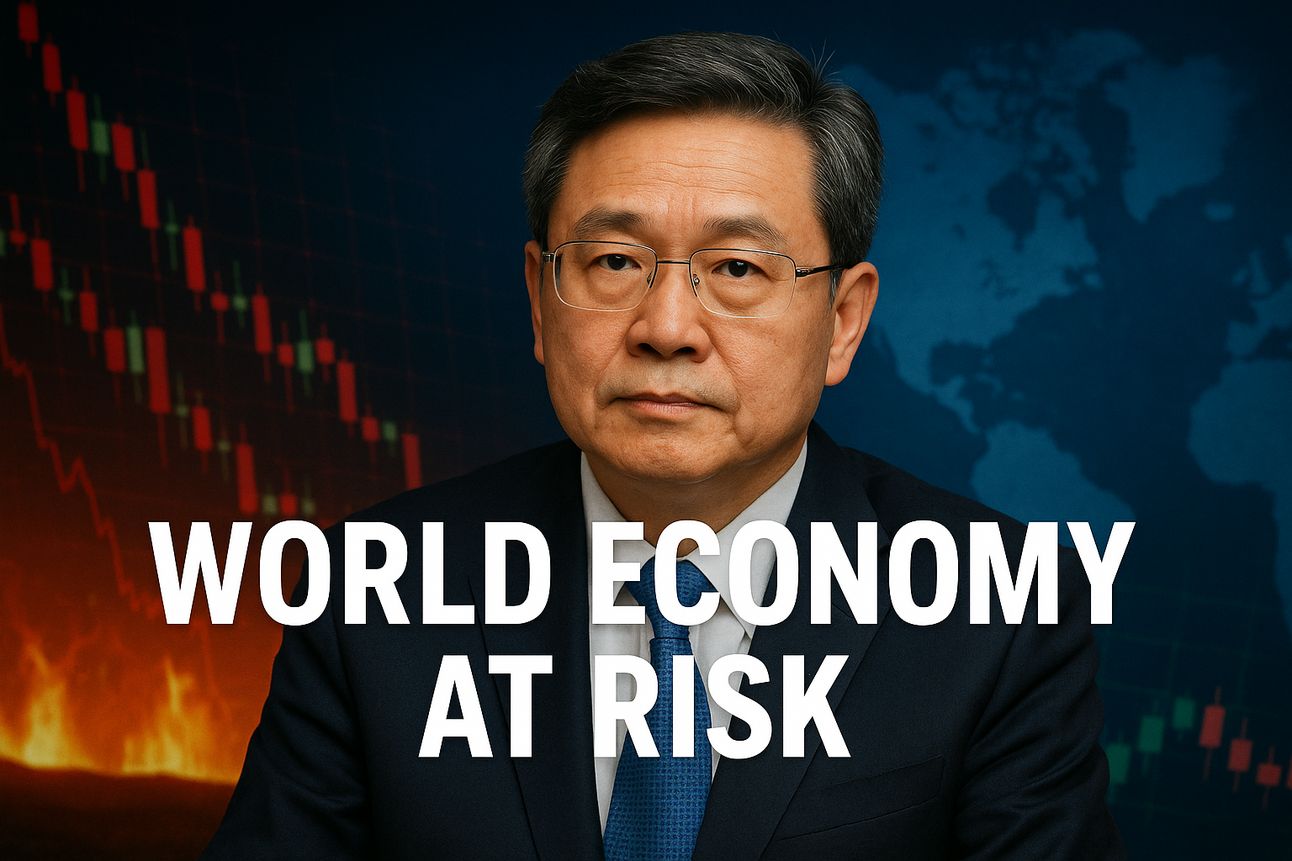The message out of Beijing this week was clear: global economic momentum is slipping, and the blame lies squarely with escalating trade tensions.
In a statement issued Friday, China’s Ministry of Finance didn’t mince words. Officials warned that tariff wars and protectionist trade policies have destabilized the international financial system, slowed growth, and threatened global development, especially in vulnerable regions like Africa. And in typical Chinese diplomatic fashion, they called for stronger multilateral cooperation to pull the world economy back from the edge.
It may sound like boilerplate central bank language, but make no mistake, this is a pointed message aimed at Washington.
Tariffs Are a Drag, Not a Deterrent

China’s remarks arrive at a tense moment in global trade. President Donald Trump’s reciprocal tariffs, now exceeding 145% on some Chinese goods, have not only roiled equity markets but also fractured long-standing alliances. Beijing’s response has been predictably firm: retaliatory tariffs of 125%, expanded controls on strategic exports, and rhetorical jabs warning other nations not to align too closely with Washington.
Now, with inflation still sticky and global central banks (especially the Fed) in a holding pattern, financial markets are absorbing a painful reality: the tariff war may be doing more economic damage than either side is willing to admit.
China’s Growth Outpaces Forecasts, But for How Long?

Ironically, the same day this cautious message came from the Finance Ministry, China’s Q1 GDP data surprised to the upside, posting 5.4% annual growth. Retail sales, fixed asset investment, and industrial production all beat expectations.
But traders know the story runs deeper. Behind the headline beat is a structural fragility. Private sector sentiment remains shaky. Manufacturing is showing signs of deceleration. And despite the solid start to 2025, investors are still treating Chinese assets cautiously, particularly as tensions with the U.S. deepen.
A Shot at U.S. Policy? Probably.

While the statement didn’t name names, the context was impossible to ignore. The Finance Ministry warned that “tariff wars and trade wars have further affected economic and financial stability.” That’s as close to a diplomatic dig as it gets in official Chinese communiqués.
The backdrop: Trump’s tariff blitz continues to provoke global backlash. Not only has China responded with tit-for-tat duties, but major economies like Japan, South Korea, and even some EU member states have begun rethinking their alignment strategies.
At the same time, U.S. monetary policy appears increasingly politicized. Questions about the Federal Reserve’s independence have surfaced after reports that Trump is exploring ways to replace Chair Jerome Powell. And with markets now pricing in three rate cuts before the end of 2025, there’s a growing sense that the Fed could be cornered by political pressure.
In this context, China’s call for a “fairer global economic system” sounds less like economic theory and more like a veiled critique of U.S. leadership.
Multilateralism or Fragmentation?
Beijing’s solution?
Broaden cooperation, especially in multilateral settings like the IMF and G20. And notably, the Finance Ministry emphasized African development as a key global priority, a move clearly aimed at reinforcing China’s leadership role in the Global South.
China has spent years investing in infrastructure and debt financing across Africa through its Belt and Road Initiative. Calling for more global resources for African development could be both a signal of goodwill, and a reminder that Beijing is still active in global leadership, even as Washington turns inward.
But let’s be clear: China isn’t calling for open borders. It wants a rules-based system that doesn’t put it at a structural disadvantage. That means fighting back against U.S. attempts to isolate it economically, while at the same time, trying to project itself as the more responsible actor.

Market Response: Muted But Watchful
The market reaction was relatively mild. The AUD/USD held around 0.6400, slightly lower on the day, but traders were focused elsewhere, particularly on Fed commentary and upcoming inflation data.
The pair remains range-bound, but any renewed trade friction or dovish U.S. messaging could push AUD higher, especially as carry trades unwind and safe-haven demand rises.

Still, for macro watchers, this matters.
When a country’s finance ministry issues a statement that includes phrases like “economic and financial instability” and “insufficient growth momentum,” it usually foreshadows coming action, either in the form of policy support or diplomatic maneuvering.
Final Thoughts
China’s message isn’t just a warning, it’s a positioning statement. Amid heightened U.S. aggression, China is trying to paint itself as the adult in the room. Whether that narrative sticks will depend on how it navigates the next few months of trade negotiations and how it cushions its own economy.
For us traders, the takeaway is simple: global economic narratives are shifting fast, and sentiment is king right now. Headlines move markets more than fundamentals. That makes agility more important than ever.
Watch the tone. Watch the tariffs. And most importantly, watch the central banks. This isn’t just about growth anymore, it’s about credibility.

